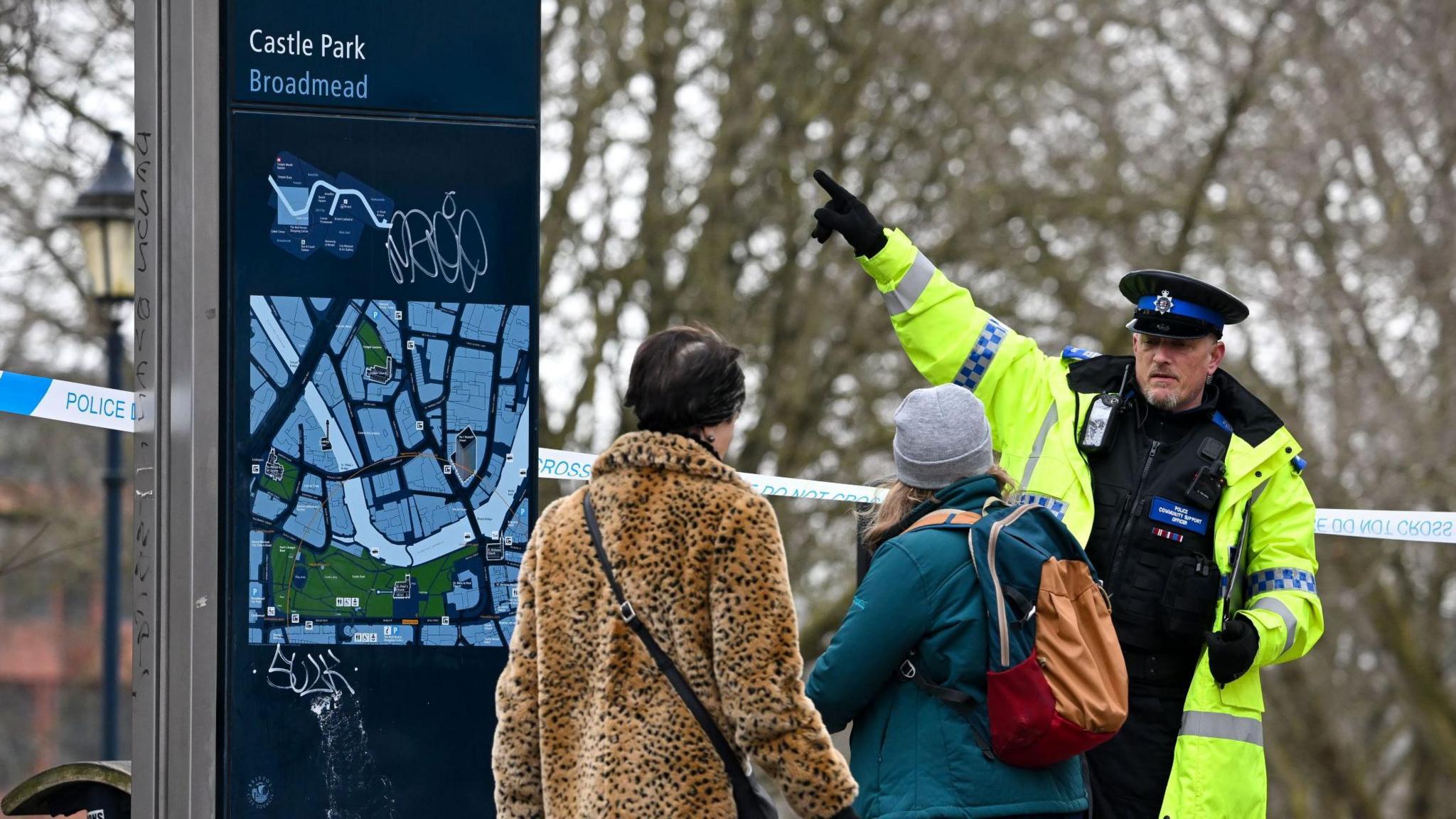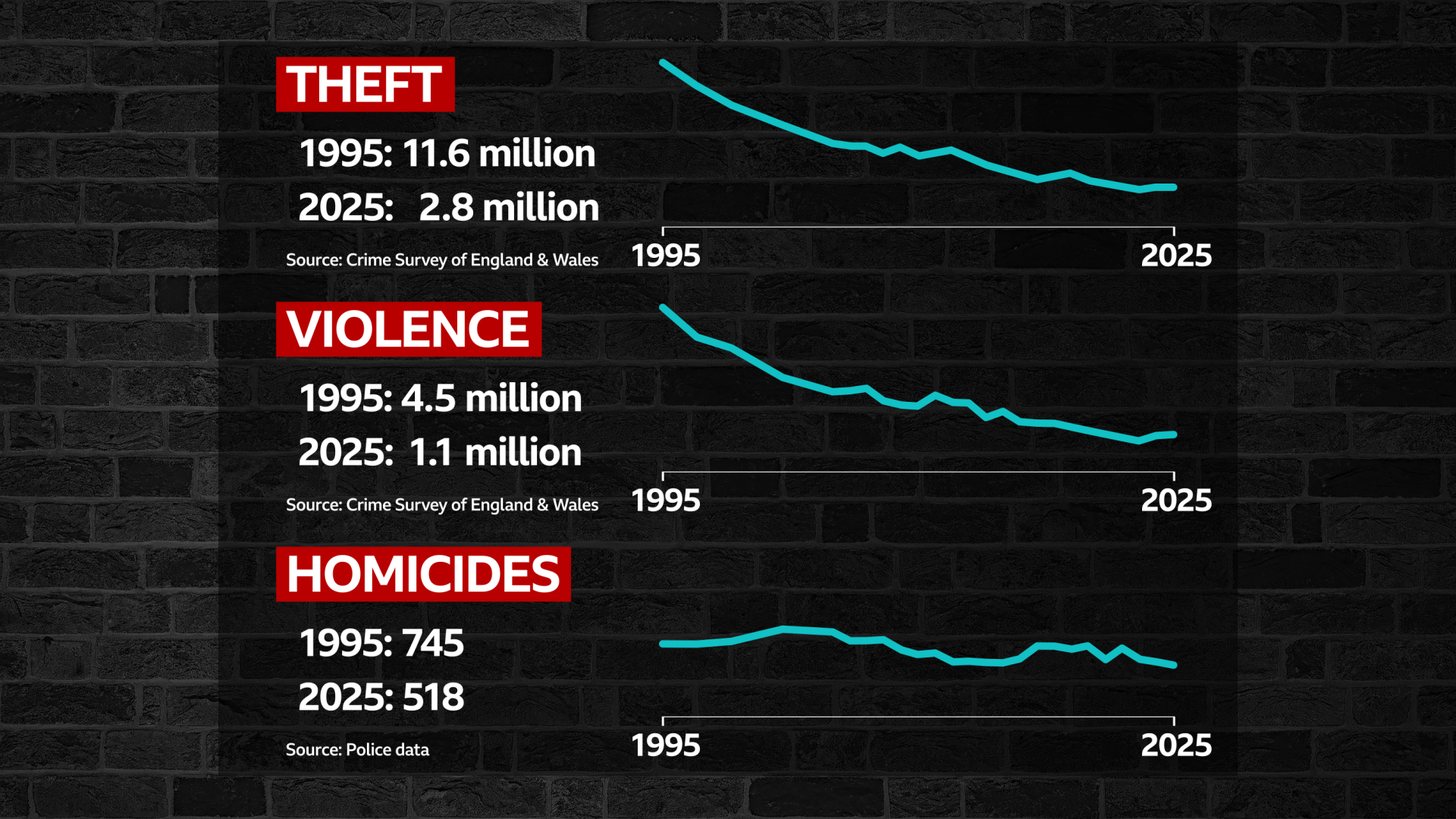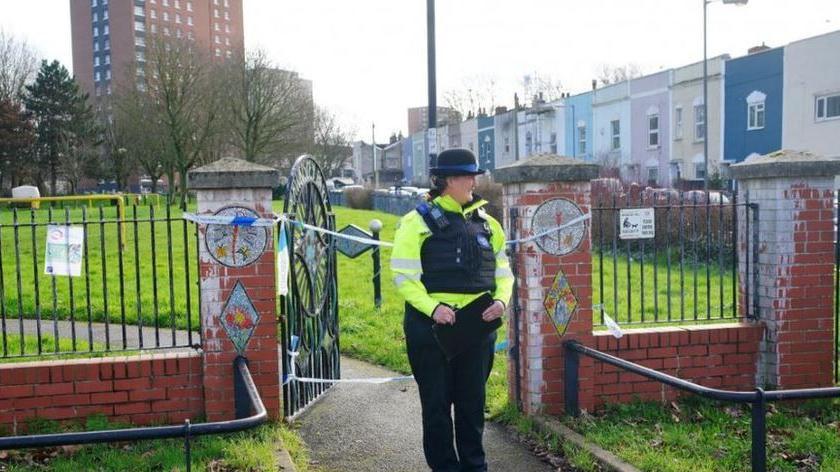Crime up? It's actually been falling for decades

High-profile stabbings have led to concerns about crime in Bristol being on the rise
- Published
A series of fatal stabbings in and around Bristol in recent years has led to talk of a knife crime "epidemic". Research suggests the public are worried and many fear overall crime is getting worse.
But it isn't - in fact the statistics show crime has, for decades, been mostly falling.
The latest trial resulting from a fatal stabbing in the West of England ended on Thursday when Zacharia Talbert-Young, 27, was found guilty of murdering a teenager in an attack just yards from his home during a busy community event.
Eddie Kinuthia, 19, died in hospital after being ambushed and stabbed multiple times in the Grosvenor Road of St Pauls, Bristol in July 2023, with a leg wound proving fatal.
The crime was linked to gang rivalry in the city, although Mr Kinuthia was not thought to be a member of one.
For people living in Bristol, it brought the issue of knife crime back into the headlines.
But public feeling can differ from reality and also raises the question of how we measure crime.
Police figures may not be the best way to assess levels - how offences are reported, classified and tackled can vary.
Experts prefer the Crime Survey of England and Wales, where tens of thousands of households take part.
And that shows that most crimes have been in decline for decades.

Most crimes have been falling since the mid 1990s
For example, from a high of 11.6 million offences in 1995, thefts are now down to 2.8 million.
Violence is also a fraction of what it was, dropping from 4.5 million offences in 1995 to 1.1 million in the latest year.
Professor Graham Farrell, a criminologist at Leeds University, said the public perception of criminality is often wrong.
"We tend to look back perhaps with rose-coloured glasses, and in fact it's quite the opposite," he said.
"Crime used to be a lot worse than it is now, for the most part."
Crime fears 'outweigh' facts

Det Ch Insp Lucy Edgeworth said there has been a fall in knife crime
Police figures are used for the types of crime, often serious, which happen less often.
The latest year's figure of 518 homicides in England and Wales is the lowest since 2003, when a new way of recording began.
Offences involving a knife or sharp instrument are higher than a decade ago – but lower than in 2019/20.
Avon and Somerset Police did record more knife crimes a couple of years ago, but that is now coming down.
"We've seen an 18% reduction in knife crime recently," said Det Ch Insp Lucy Edgeworth, now the force's lead on knife crime after 20 years as an officer.
"Ever since I started in policing the fear of crime has always outweighed actual crime."
Police and statisticians agree: our streets are safer than they have been for decades.
But when young people are killed, and others jailed, it doesn't feel that way to many people.
Get in touch
Tell us which stories we should cover in Bristol
Follow BBC Bristol on Facebook, external, X, external and Instagram, external. Send your story ideas to us on email or via WhatsApp on 0800 313 4630.
Related topics
- Published3 November 2024

- Published23 May

- Published9 January 2023
